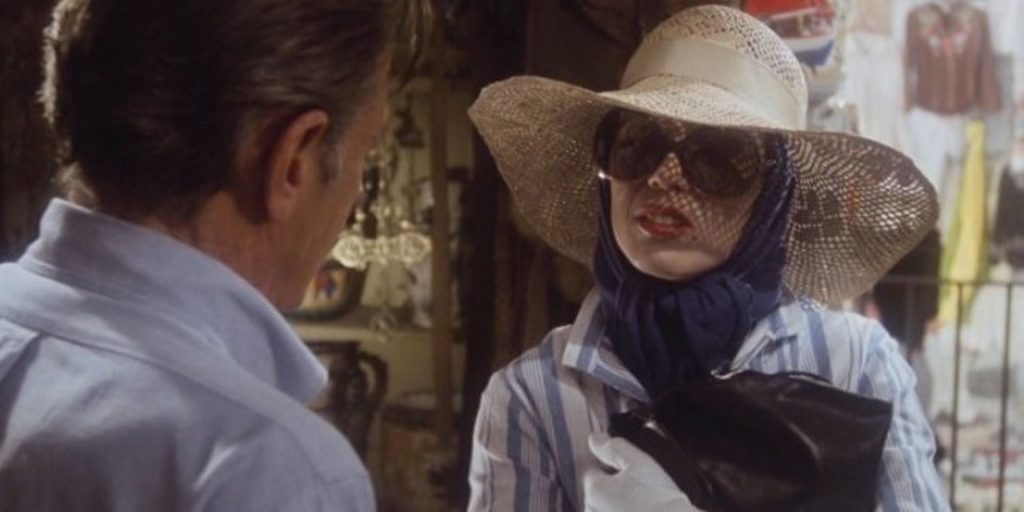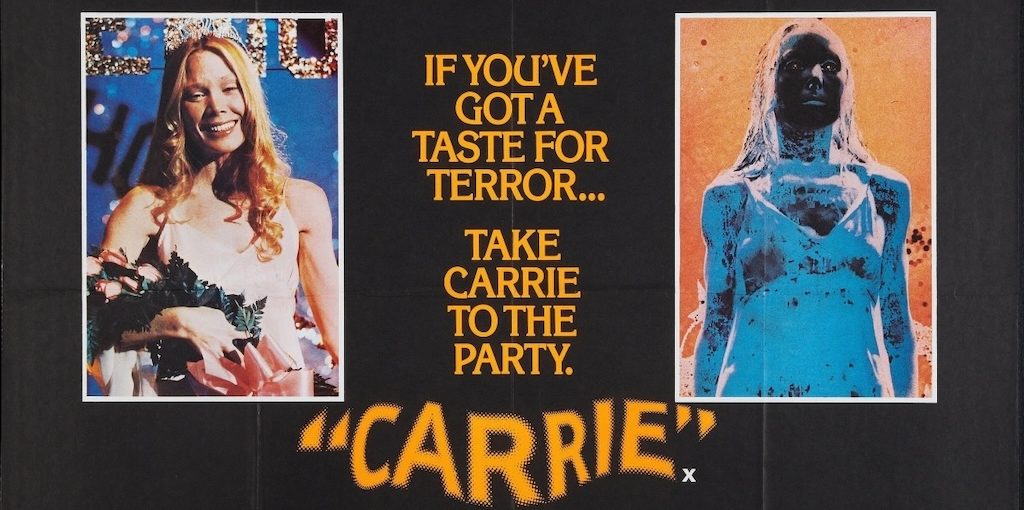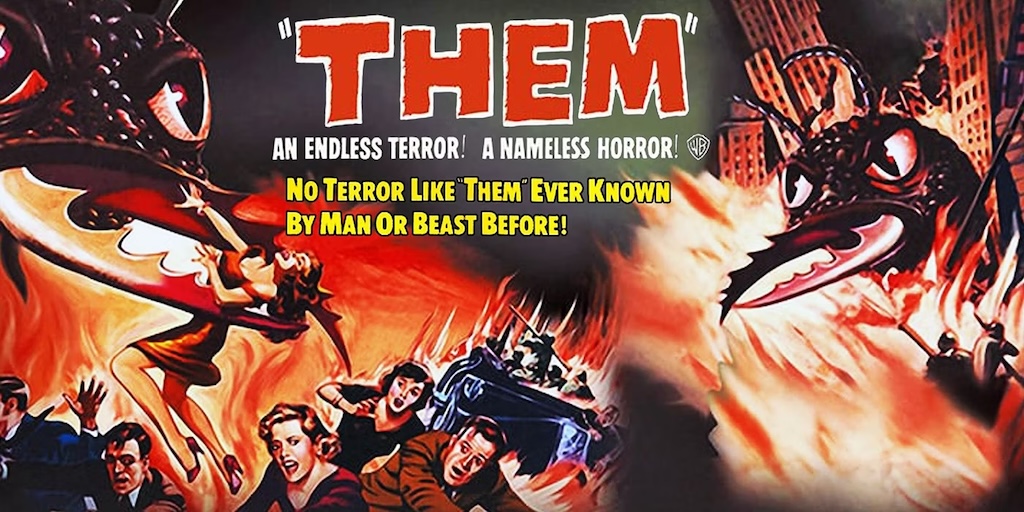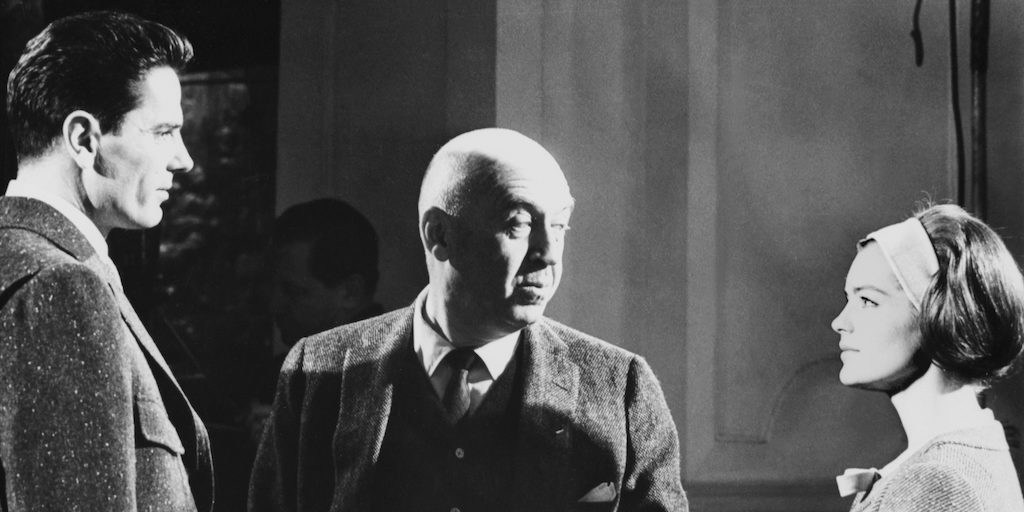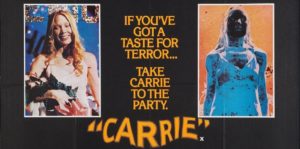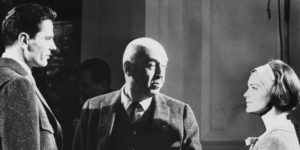In a video featured in our YouTube channel to present our book ”Hitchcock at work”, Sebastian De Caro, who did me the honor of sharing that moment with his usual wit, reminded me that I don’t have a big esteem for Billy Wilder’s films, as well as other past and present filmmakers.
Frankly of the latter I have nothing to say, but to sharpen even more my critical pencil for ––should they arise–– future written and oral interventions, and to sharpen even more, if possible, our arguments.
But Wilder… is not that easy. I’ll start then with the “odious me” as coined by Pascal.
If I do have and maintain a huge intellectual influence in what is referred to arts, its history and so forth, the name of Italian aesthete and scholar Mario Praz comes to mind immediately. Fortunately, we have already dedicated an extensive study to him; although he deserves a much more extensive treaty. Praz transmitted to me two or three fundamental concepts and arguments for aesthetical understanding and related to its authors and representatives.
Here I’m going to refer to one that relates, and quite early, to Billy Wilder; even though, and as you will appreciate, is rather oblique.
Praz teaches that to understand a determined aesthetical-historical period, a style and even a school of thought, we should not pay attention, or direct our first impressions, to the great artists of the period.
This is for a very simple reason. If we want to know what the baroque was, we should not ask neither Bach nor Caravaggio, nor Tasso, nor Bernini. We aim to find its “do”, as Praz repeats, for example, in the poetry of Giambatist Marino or the musical compositions by Benedetto Marcello. I would add on my part the poetry of Gongora or books such as Gracian’s “The Critic”.
Why? Because ––Praz arguments–– the minor, median, directly epigonal or disciplar artist would give us the precise familiar airs of a period, since it cannot go back to the heights of genius. Given that, should we begin our understanding of the baroque with Bach, Caravaggio or Bernini, we would only find Bach, Caravaggio and Bernini themselves rather than the baroque form or style.
Let’s put it this way: the period and style of a time exist, and can be recognizable, palpable, audible, legible, etc. Of course the genius or main author participates of that with his motifs and figures, extracted or appearing from that moment of expression. But his quality of genius, which is ––and according to us–– the skill of taking randomness down to zero in his aesthetical-spiritual manifestations, necessarily dilutes the quid of moment, by reabsorbing into that totality which is the other name genius answers to.
Would we try to understand what is called ––and usually, badly called–– classic American noir novel, or hard boiled, by asking Chandler, MacDonald, or even Hammett? No. But if we go with Jonathan Latimer, where motifs and figures already became serial tics, we would enter through a narrow ––yet necessary–– door to that style of expression.
Even still, if anyone seeks to understand, especially feel, what is the music in Argentine Tango, would we tell that person to listen to De Caro or Arolas, if we go with the “old guard”, or Troilo-Pugliese, if we go to the affirmation of the great orchestra of the 1940’s? It would be a big mistake. With the former, Roberto Firpo is what is adequate. With the latter, Florindo Sassone or Rodolfo Biaggi are more proper choices.
If it is a singing tango, which delusional fool would suggest to listen, before anything, to the recordings of Carlos Gardel?
Having exposed the previous point, one of my fundamental postulates in “The Concept of Cinema” is what we have called the “Austrian-Hungarian element of Classical Cinema”. What is that? Let’s repeat ourselves a little, by beginning with the elemental. The amount of writers, directors, producers, set designers, actors, musicians and other crafts, of recent Austrian-Hungarian origin didn’t just emigrated but built and invented Hollywood.
Just that? No. They adapted into Hollywood classical cinema a concept or element fundamental to the Habsburg culture. The non-difference between “high” and “low” art. The Austrian-Hungarian musical culture made no differences between Mozart and the several Strausses; or even between Mahler and Franz Lehar; between opera and operetta; so it is in their wonderful theatre, its cabaret and others.
This ––as we say–– was adapted to and even improved in Hollywood. What do we film? What do we adapt? What is good. Shakespeare? Yes. Mary Shelley or Bram Stoker? (1); also, sure.
The origin of All About Eve was a short story in a women’s magazine. Casablanca was a radio play. The crown jewel that is It’s a Wonderful Life! came from a brief vignette in a Christmas Card.
Once a literary advisor hired by MGM said, practically the day after she earned her degree in Literature, that her job consisted in the following: She had her own desk, air conditioned and earned a hefty salary. “They brought me hundreds and thousands of books every week. Broadway stage plays, recently published novels, manuscripts, re-published classics, pulp fictions, comics… What did I have to do? Read them and see if a film could be made from them. I remember that in a single week I read “Ulysses”, several melodramas, Eugene O’Neill plays, several operatic librettos, noir novels, the script for a radio play and a sizable part of the Elizabethan Theatre”.
The Austrian-Hungarian culture in its fullest and in a transatlantic mode.
Finally, yet not less important, is what comes next. That air, that aura of declining frivolity, of the party that ends after a long drinking binge. That constructive cynicism, that talent for self-irony, for the cultural epigram and worldliness. From a very early stage (Von Sternberg) to its culmination (Mankiewicz, Ulmer, Lang, Ophuls, Cukor, Sirk) that “do” manifested itself in the most successful ––and most exemplary–– pieces of work, more than ever.
But, and there’s the detail ––as Cantinflas might say––, where did I see this for the first time? In Laura or Bonjour Tristesse by Preminger? In Scarlett Street or The Woman in the Window by Fritz Lang? In Letter from an Unknown Woman by Max Ophuls (*)? In Ruthless or Bluebeard by Edgar G. Ulmer? In Letter to Three Wives or 5 Fingers by Joseph L. Mankiewicz? The Philadelphia Story or A Double Life by George Cukor? In Written in the Wind or All That Heaven Allows by Douglas Sirk? No. I have seen it first in Billy Wilder.
Sunset Boulevard is an extensive and evident summary of all that style. Decadence, finesse, but final; cynicism and a taste for a certain deleterious mode of the sensuality. Wasn’t Sacher-Masoch and Otto Weininger two more than notorious Austrian-Hungarians? Full with gypsy violins and gigolos wearing tuxedoes. That refinement of what once was and only remains in time and distance, just like the bubbles in a champagne glass. That is, of the finest kind and drank in Pompadour glasses…
In Sunset Boulevard this is taken to its apotheosis, but is pronouncedly photographic in the plastic sense and verbose in the literary sense. Not to mention the rats lurking behind the corners; the tangos danced in mirrored floors; Norma Desmond’s eyes submitted to morphine and mascara; the silent butler and ex-husband submitted to ––you see?–– a sachermasochian condition and portrayed by the early vulgarizer of that which is Austrian-Hungarian (2), Erich Von Stroheim. The loud silk and the macabre chiaroscuros. Bigger than Life? Certainly, but already set in the glass display at the Bazaar to be auctioned to the curious.
Of course this was already present in Double Indemnity, where to make evident that it is a film noir the protagonist says “baby” almost in every dialogue he sustains with the femme fatale, which to demonstrate that she is such wears a dangerously suggesting “slave” anklet; the same way Audrey Hepburn would in Love in the Afternoon (*). We need the morbid mink furs of a Venus in interiors and the list of props is complete.
Of course we can find this in Sabrina as well; later taken to its highest point in Irma La Douce; and prior to this, mixing the operetta of Franz Lehar and coated with the turbid eroticism by Arthur Schnitzler in Some Like it Hot.
I don’t know if I could go that far as to repeat what was said by Andrew Sarris in his critical review of Hollywood classical directors: “Billy Wilder is too cynical to believe even his own cynicism”.
I don’t think so. I believe his cynicism ––a word often misunderstood and even vilified–– (3) to be false. Or that was false when compared to the world of Mankiewicz, Cukor or Lang, et al. It wasn’t false; but it was a little bit cheap and pretentious. It is still caviar; but rather than Beluga it is a simile of Norwegian shine. The Champagne is not watery, by the way, but it fizzled out a little by the mishandling it suffered on its transport from the originary cellar located in Vienna.
The interest he has awakened in recent years is simply due that he has lived longer than the other classical or semi-classical directors. Everybody else has gone. Hitchcock wasn’t around anymore, neither Hawks, nor Minelli; Premiger, Ulmer or Mankiewicz weren’t around either. Not even Michael Curtiz (an Austrian-Hungarian Jew, by the way) wasn’t around; not even Lassie.
Then, that nostalgia that badly replaces authentic melancholy ––like the caviar simile replaces Beluga–– took over the audience and even some of the most recent directors ––like Cameron Crowe––, but without the least fiato to approach that Divine Decadence, as Sally Bowles might say.
And so, the last books, the interviews where ––now we can agree–– Billy’s talent is masterful in the cynically perfect epigram, in the bittersweet memento, in the spicy and ludicrous gossip. Only he remains in the middle of an empty, lightless set. Naturally, he didn’t show himself as a male version of Norma Desmond, of course not. The early exercise in exorcism served its purpose. But was already just for the memento, for the sumptuary evocation and in there he indulged himself in being the last of the Austrian-Hungarian, to the reach of anybody. And that’s saying a lot.
I don’t want to finish this I’m writing without paying attention to that paradoxical swan song in Billy Wilder’s body of work. Naturally, I’m talking about Fedora. We say it is paradoxical, given that the song of that heraldic bird is employed to mark the farewell waltz of an author in his autumn.
But here was when the rooster crowed and counter to the sense of the usual cursus honorem. Here Wilder’s artificial cynicism became active, operative, after half a century of being just a rear-guard cynicism, a specific so concentrated that was poisonous.
He comes back to the decadent world and locked within himself, like an oyster hiding its pearl like a loan shark for its endogamic use. Fedora is a re-reading of Sunset Boulevard, but with the breeze of the pure air and the pure blue of that Mediterranean Sea and skies.
Here we can also say that early stagnant decadence is reconverted by a touch of mature talent, in decadence like the battering ram of an unrestricted defense by Hollywood classical cinema; that sacred forest now lost. And so come the furious attacks of the writer-director portrayed by William Holden ––now far from his skills as a gigolo–– aimed towards those “kids with beards that don’t need a script and only need a hand-held camera and a zoom lens”. With that he had reverted and bloomed again after so many decades of claustrophobic self-delight. Here gossip, trivia, morbidity and even the macabre are the heavy artillery, blunt and efficient, against that carelessness from a certain avant-garde, always renewed and always the same.
It is true that by then ––1977––, the new generation, the hard and proud self-conscious phalanx, had put everything back in its place. Two parts of The Godfather saga, The Exorcist and even some of the first works by Brian De Palma had appeared and beat those posers from the prior generation, who attempted to turn Hollywood cinema into a television and theatrical dependency and even a follower of that allegorical-childish sloppiness tirelessly manufactured in Paris.
This was already true when Fedora appeared. It is possible that it can be seen now as a masterful settling of the score, but rather anachronistic and mature, when the full blooming of the self-conscious spring had already blown up.
It can be. But here again I step into the personal; even more. I remember seeing it at a press screening. Especially I remember the moment when William Holden sneaks into the mysterious, but very greek and sunny manor, where Fedora’s secret ––and of cinema itself?–– is concealed.
The action rushes; we cross along the blue Aegean Sea with a full sun; that sun that inspired beauty and philosophy. Miklos Rosza’s score stuns, also waking from its lethargy. We enter the manor; we walk around its now empty interior; around its hallways and dark corners, and in the moment Holden opens a drawer in a dresser and discovers ––with a sudden POV shot–– the hundreds and thousands of pairs of white gloves belonging to Fedora, while the score soars… I remember that few times, at least until then and in great part until today, I felt that ecstasy, that physical and emotional exaltation that art achieves when it is cinema.
As Pound said about Whitman: “I make truce with you, Billy–– I have detested you long enough. Let there be commerce between us.”
- Very important, both “Frankenstein” and “Dracula” are two absolute masterpieces. Even more, we have said that they are more lasting pieces of work than all the pasticcio of “realist” novels of the nineteenth century. In the same way “Wuthering Heights” and “Moby Dick” are masterpieces. But, like we have also pointed out, this revalorization of Shelley and Stoker is yet another thing we owe to Hollywood. Until then, they were archived, crossed out and even despised.
- It is time to say ––or remember, in my case––, since I have said it several times before, that Erich Von Stroheim’s films are a bluff; seen today are childish, ridiculed, dated and especially –––and early–– bastard regarding the Austrian-Hungarian.
The grumble against producers, who would become inflationary with Orson Welles’ nonsense, are part of the dark anti-Hollywood legend. He was a delinquent and a falsifying freeloader. Even the “Von” particle was fake.
As Gloria Swanson remembered, who privately produced the film, well… with the help of Kennedy senior, about the shooting of Queen Kelly (thunderously vulgar): “V S had no idea what cinema is about. We could lose an entire day of work trying to shoot a close-up of an ashtray.”
- The school of philosophy known as cynicism, whose name came from “kyon”, dog, whom these philosophers surrounded themselves with because they preferred their company rather than men’s (and whose epigrammatic variables are repeated to this day), were those who taught orally, lived at the bend of the road and under the doorways. They rejected every luxury, wealth and ostentation. It was told, I don’t remember where, that one of the most renowned cynics, Diogenes of Sinope, was invited once by Plato to visit him at his home. The latter, a very rich aristocrat, lived at a palace. Diogenes enters into what we later call a vestibule and starts wiping off his muddy feet on the carpets laid there; surely of Persian origin. Plato appears and, upon seeing what his guest is doing, he asks “What are you doing, Diogenes?”. Diogenes answers “I’m wiping my feet in your pride, Plato.”
Of course we could write down that the cynicism of Austrian Hungarian origin is of those who lived in palaces with Persian carpets at their doorsteps; but shrugs his shoulders, because he knows that everything comes to an end…

